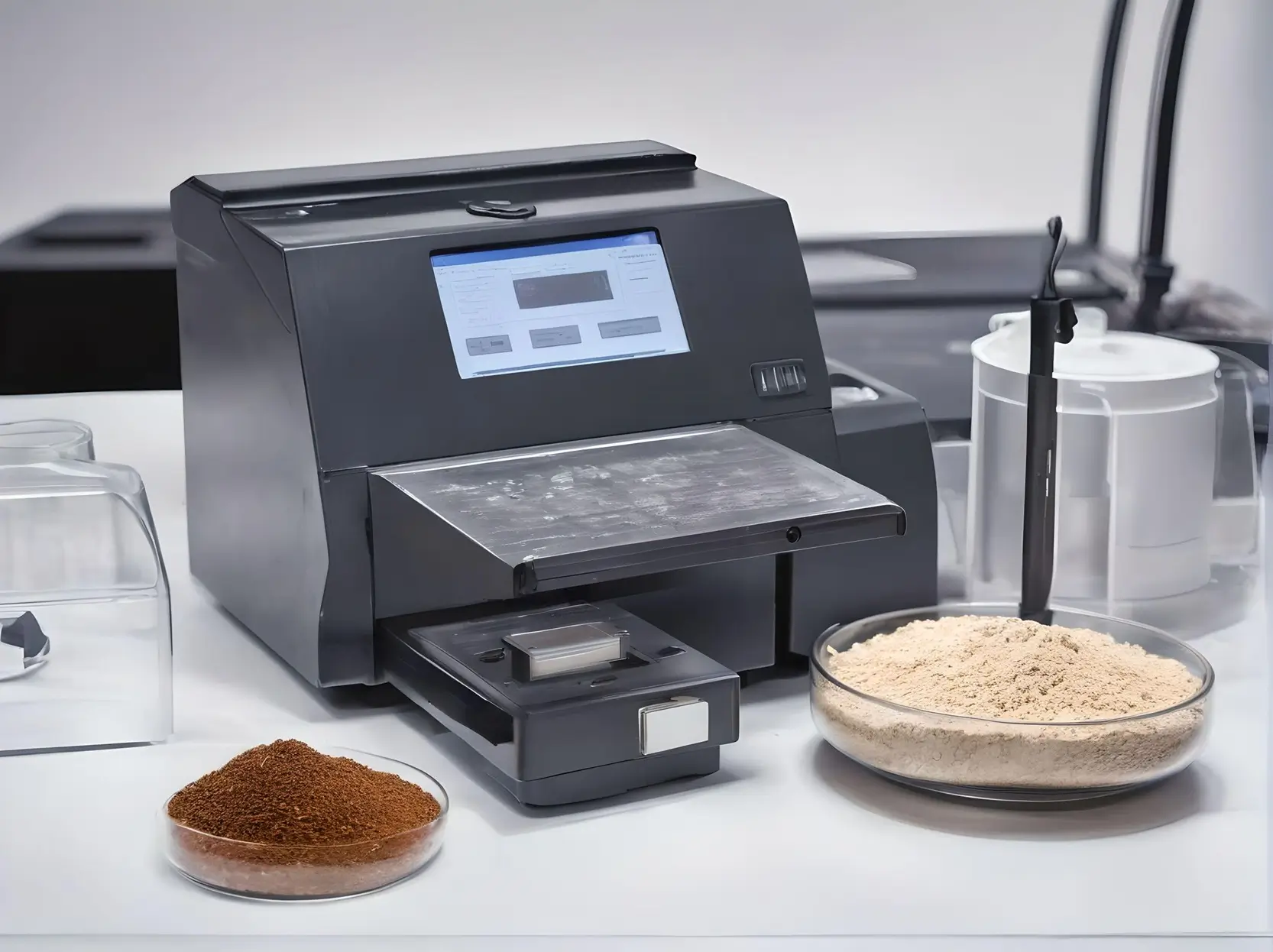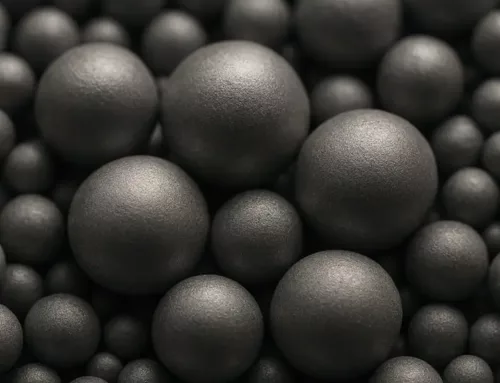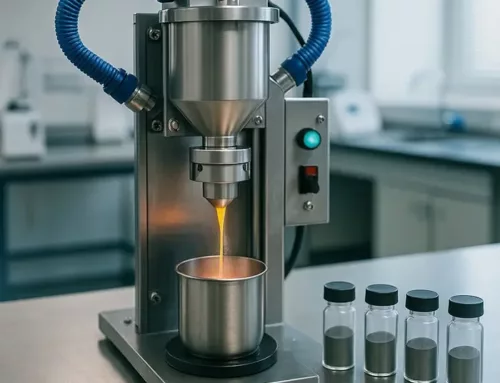Table of contents

Powder flow behavior in animal feed formulations shapes everything from livestock nutrition to processing efficiency. In 2024, global compound feed production reached 1.39 billion metric tons. More than 28,200 feed mills in 142 countries handled this output. Together, they generated over $400 billion in revenue. This vast infrastructure supports livestock, dairy, poultry, and aquaculture. Most consumers, however, never see its complexity. Every bite of meat relies on powders and granules flowing smoothly through silos, mixers, and conveyors. Proper control of these powders supports food security, economic stability, and supply resilience. With this complexity in mind, we now focus on the granular challenges of formulation and flow dynamics.
The Physical Challenges of Feed Powders
Animal feed manufacturing has changed dramatically in the last two decades. Nutritional complexity increased as production volumes rose. Multi-nutrient formulations deliver macro- and micro-nutrients together. Success depends on proper formulation in the mixer. Consistency in physical behavior during transport and storage is just as critical. Powder flow behavior remains a central concern for every feed mill. Flowability reflects mechanical, electrostatic, and environmental interactions among particles. It changes with material properties and process conditions. In high-throughput facilities, poor flow or segregation can cause dosing errors, nutritional gaps, and costly line shutdowns.
Post-Mixing Segregation and Its Mechanisms
Physical segregation after mixing is a persistent challenge in feed manufacturing. Even after homogeneous blending, mixtures often lose uniformity during transport. Vibrations, gravity flow, and mechanical movement all trigger this effect. The problem stems from differences in particle properties. Animal feeds contain ingredients of various sizes, shapes, and densities. For example, ground corn and wheat bran differ greatly from fine, cohesive vitamin-mineral premixes. Combining them increases the risk of stratification, especially during vertical transitions or long free falls. Poorly designed silos worsen the problem. Downstream equipment, such as pellet presses or bagging lines, then receive mixtures with altered composition.
Many blame poor mixing, but post-mixing segregation is usually the culprit. Segregation mechanisms include percolation, where fine particles settle between coarse ones. Fluidization also plays a role. Fine, light particles rise with air currents during discharge. Heavier particles travel farther during free fall due to higher momentum. Each mechanism interacts with equipment design. For instance, funnel-flow hoppers channel material down the center, leaving stagnant zones at the edges. Cohesive premixes may concentrate in these zones, leading to uneven discharge. Mass-flow hoppers move all material uniformly. However, they require steep walls and low-friction surfaces. Retrofitting older mills for mass flow often brings high costs and downtime.
Measuring Powder Flow for Predictive Process Control
Powder flow testing in animal feed formulations must reflect real handling conditions. Simple methods, like angle of repose or flow-through-orifice, fall short. They offer limited insight into dynamic flow properties. Advanced methods, such as the Brookfield Powder Flow Tester or the Freeman Technology FT4 Powder Rheometer, provide better data. These tools measure internal friction, cohesion, and flow functions under stress. Such metrics predict how powders will behave in silos or feeders. Even freely flowing premixes can form ratholes or bridges after slight compaction. Time consolidation testing is also useful. Feed ingredients often sit in storage for hours or days. Weight and humidity changes increase interparticle bonding, altering flow during discharge.
For a deeper look at flow measurement, see The Ultimate Guide to Powder Flow and Flowability Testing.
Airflow, Particle Lift, and Fine Component Drift
Air movement within processing equipment adds another segregation risk. Most powder transfers use enclosed spaces. Internal airflow, especially in tall hoppers or elevators, can fluidize fine particles. Powders like lysine, choline chloride, vitamin E, or mineral carriers are sensitive. These hygroscopic ingredients have high electrostatic tendencies. Air currents lift fines to upper sections or cause them to stick to equipment walls. This not only reduces their concentration in the product flow but also causes residue buildup. Cleaning becomes more complex, raising risks for cross-contamination and biosecurity, particularly with species-specific formulations.
Filling silos or bins introduces further airflow issues. As powders cascade into storage, displaced air moves upward. This air can lift low-density fines, such as vitamin premixes or amino acids, to the top. As a result, a concentrated fines layer forms at the top, while coarse particles settle below. Discharging from this structure draws an initial outflow rich in fines, followed by depleted material. This “fines cap” is especially problematic for micronutrients dosed in small amounts. Top-layer concentration can overshoot targets, while later product lacks those components.
Mixing and Homogenization Solutions
Leading animal feed producers now use advanced mixing technologies to reduce segregation and ensure uniformity. Forberg International, Bühler Group, and Lindor all offer specialized mixers for delicate or multi-component feed blends. These systems apply gentle but thorough mixing actions. They maintain ingredient integrity and minimize stratification, even with fragile additives. Choosing the right mixer from these proven suppliers can significantly improve blend consistency and process efficiency.
For practical steps to prevent separation during blending and handling, visit The Ultimate Guide to Powder Mixing and Blending.
Microingredient Dosing and Coating Solutions
Precise dosing of microingredients is critical for nutritional accuracy. KSE Process Technology manufactures the ALFRA dosing and weighing systems used in the feed industry. These systems help minimize segregation and dosage errors. On the ingredient side, DSM Nutritional Products offers the Microvit® range. Their flow-improved, microencapsulated vitamins and minerals help reduce fines loss and ensure uniform dispersion throughout each batch.
Monitoring, Sampling, and Verification During Operations
Quality assurance depends on real-time process monitoring, not just lab tests or final assays. NDC Technologies InfraLab analyzers provide near-infrared measurements for blend uniformity at discharge points. Load cells in silos reveal flow inconsistencies. Regular sampling at multiple line points confirms uniformity. In high-volume plants, non-uniform product means more than nutrition loss. It can lower pellet quality, affect digestibility, and risk regulatory compliance. This is crucial for medicated feeds with strict dosage limits.
Preventing Segregation Across the Production Chain
Mitigating segregation requires more than good mixing or careful formulation. Process integration and equipment design are critical. Devices like vibration-assisted hoppers, air fluidizers, or agitated feeders improve flow—if tuned to material properties. Otherwise, they may worsen segregation or cause new issues, like particle breakdown. Coating technologies offer another solution. Adding flow agents, such as silica or vegetable oil, can reduce cohesion and static. Microencapsulation helps protect and separate fine actives. However, both methods demand evaluation to avoid hurting bioavailability or pellet stability.
Handling sequence matters, too. Shortening drop heights, reducing free-fall, and minimizing transitions between conveyors all help. Pneumatic lines should be checked for velocity profiles and elbow shapes. Excessive speed or turbulence will separate particles by inertia. Many mills still use old equipment not designed for complex powders. Retrofitting is costly, but small changes—like adding baffles or flow correctors—can improve blend integrity downstream.
Managing Flow as a Nutritional Variable
Managing powder flow behavior in animal feed formulations is now a core requirement in feed manufacturing. Testing at the lab bench or using a single flow number will not suffice. Feed producers must analyze powder behavior throughout design, scheduling, and quality control. Only with this integrated approach can they ensure consistent, nutritionally accurate, and stable feed at scale. As formulations grow complex and animal welfare gains focus, physical powder properties are as crucial as chemistry. Both performance and profitability in the feed industry depend on mastering these granular dynamics.







